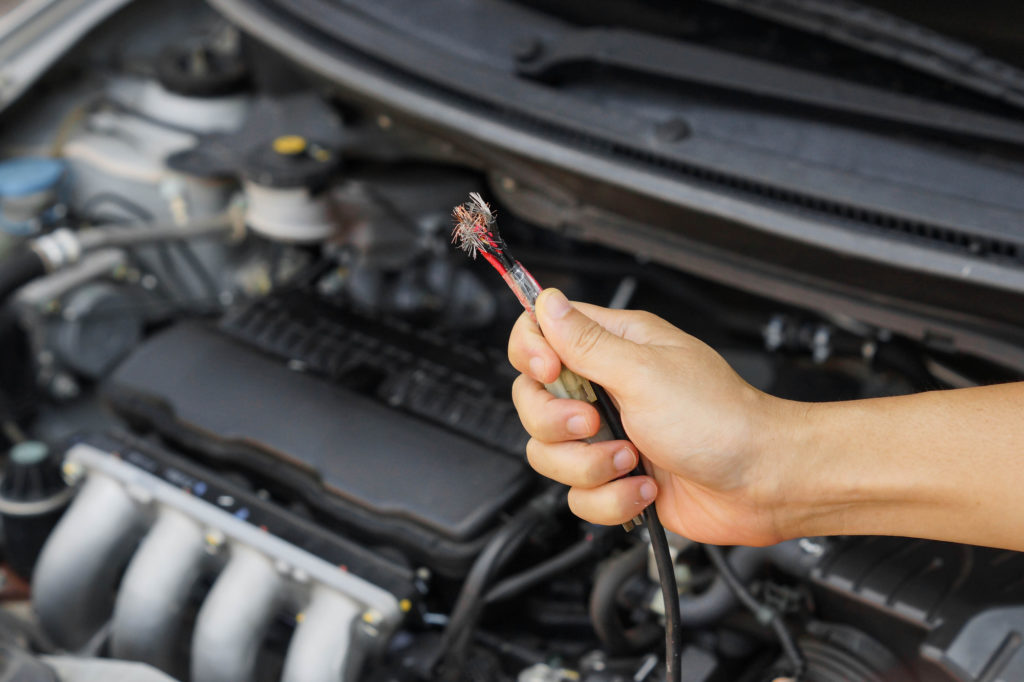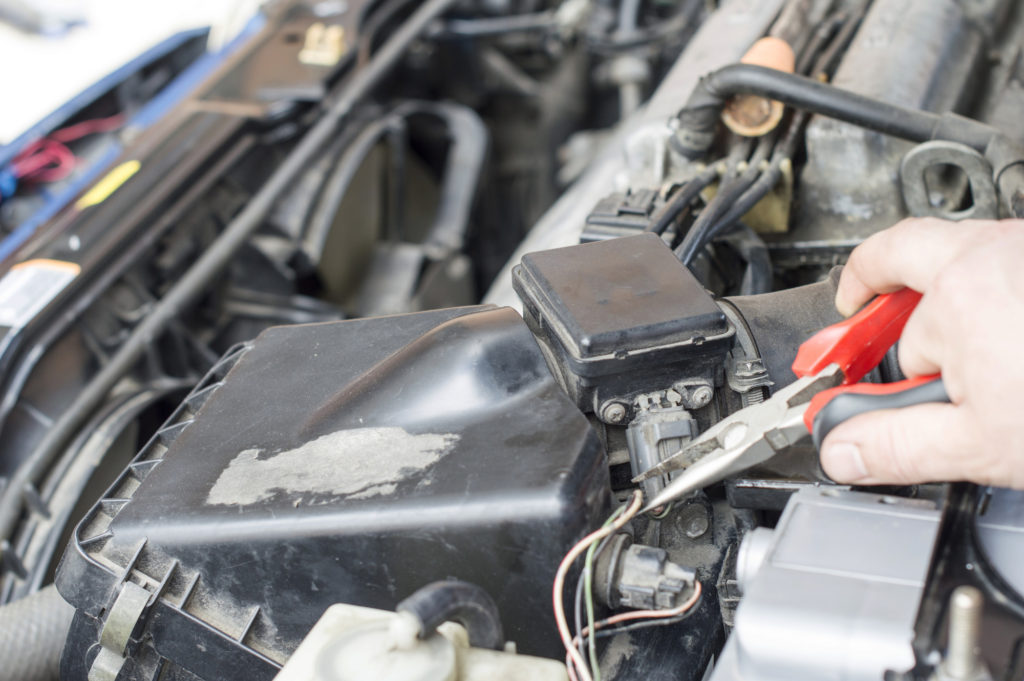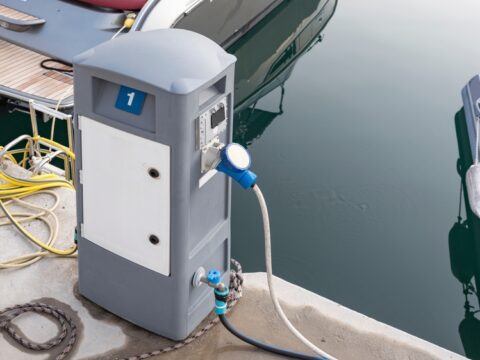Just about every garage uses dielectric grease because it protects parts against corrosion. It is an incredibly versatile grease with only a few limitations.
The following summarizes dielectric grease, its most common uses, and the top-recommended brands.

Contents
What Is Dielectric Grease?
Dielectric grease, also referred to as tune-up grease, is a silicon-based lubricant that helps repel moisture and provide corrosion protection to parts and electrical connections on and in your vehicle. It has many uses both in the auto shop and at home, including:
- Auto work
- Home electric work
- Maritime applications (because it fights off corrosion)
- On outdoor equipment that is exposed to the elements
- To lubricate rubber protectors of electrical connections and wires
- On recreational vehicles
There are a few limitations where you can use dielectric grease. Those include:
- On silicon-based rubber or plastic because it will break them down over time
- On mating surfaces (pins and sockets) of electrical components
How Is It Different From Regular Grease?
Most people would not recognize dielectric grease from regular grease, much less explain how the two types of grease are different. Many drivers confuse the two or assume they are interchangeable. Both dielectric and regular grease have similar and different ingredients that make them unique but define the role each plays as a lubricant and protectant.
First, dielectric grease is physically different from regular grease. It is high-temperature resistant, meaning it will not melt when exposed to engine heat. Some greases dissolve directly in water or dissolve in warmer water. However, dielectric grease is waterproof and will not dissolve in liquids like mineral oil, water, or ethanol.
Dielectric grease also provides more protection against corrosion. Corrosion protection is why dielectric grease is so good when applied to vehicles and marine vessels. Exposing dielectric grease to corrosive elements like salt will not dissolve or erode it, leaving what it is protecting safe.
Finally, there is the price of each. Regular grease is much less expensive, mainly because it is more easily found and made. Dielectric grease requires a specific silicon-based formula and production process.
How Dielectric Grease Works
When silicone oil combines with a thickener, the result is a water and corrosion-resistant, greasy substance. With dielectric grease, the silicon used is polydimethylsiloxane. It also has a thickener of amorphous fumed silica.
When polydimethylsiloxane and amorphous fumed silica are mixed, the two create a non-conductive lubricant that can be spread on automotive parts and will protect those parts from exposure while creating a waterproof barrier.
Dielectric grease is used on electrical components because it is not current-conductive. Using it poses no risk to whatever system it is put on in terms of the grease causing a short. It is such a poor conductor that it can impede current transfer between electrical connections.
There is a myth that dielectric grease will block an electrical connection, but properly connected contact points will not be affected. The grease will also only obstruct a connection from being made.
That said, you want to avoid getting gobs of dielectric grease on a connection point. A gob of grease can block current and render the contact point useless. If the gob is thick enough, the only way to restore the contact point is to remove the gob of grease and clean the contact point with a degreaser.
Another role dielectric grease plays is to keep sand, dirt, and other debris from permeating the connectors and preventing them from properly functioning. The ability of dielectric grease to thwart debris from interfering with a connection point is why mechanics smear it on the non-contact part of a battery terminal and spark plug boots.
It is not, however, a traditional lubricant. You cannot use it to grease bearings, joints, hinges, or other moving parts. For jobs like that, you need to get lubricating grease.
Where to Apply Dielectric Grease?
Dielectric grease coats electrical contact points and protects them from exposure. When applied, dielectric grease forms a liquid-proof, non-conductive protective layer and wall against dirt, dust, liquid, and debris.
Here are a few applications, ranging specifically from auto care to various other use cases.
Spark Plugs
Dielectric grease seals spark plug connections. Greasing the connections accomplishes two things:
- It provides a liquid-proof barrier to the plug
- It prevents dirt and debris from permeating the connection and potentially harming the spark plug or prompting it to misfire
Stabilizers
Using dielectric grease on stabilizers is a non-automotive application. Stabilizers are used in keyboards to provide balance across keys. They need protection and a little lubrication to continue functioning as designed.
Distributor Cap
Adding dielectric grease to distributor cap connections while avoiding the contact point can help protect these connections from dirt and debris. It also ensures a liquid-proof seal. On the other hand, because of distributor cap placement in an engine, exposure to liquid is less of a factor.
Headlights
Coating the seams between connection points in a headlamp assembly protects the connections from the elements. The trick is to avoid getting grease on the contact points. If you get dielectric grease on a contact point with a headlamp, it will not work and is a hassle to clean.
It is a good idea to only grease areas you know are well away from any contact points and create a buffer of at least a quarter-inch from the edge of the grease to the edge of the contact point.
Ignition Coil
Older ignition coils can crack at their base and throughout the protective coating. One solution to this is to apply dielectric grease to the cracks. After sealing the cracks, cover the sheath (shaft) with a thin layer of grease to ensure no current or sparks can go beyond the grease layer.
You can also do this preemptively to a newer coil. If you apply it to a cracked coil, remember that dielectric grease is a short-term gap-type solution. Replacing the coil as soon as you can is a priority. You do not know when the grease might wear off and leave you stranded.
Home Electrical Systems
There are many home applications for dielectric grease. Anywhere you have an electrical connection exposed to dust, dirt, and debris or that could be exposed to liquid qualifies. Applying it to the base of an electrical connection creates a seal that only breaks if the grease or the connection is breached or contaminated.
The important thing to remember when using dielectric grease in any environment where it may come in contact with people or pets is that it never really hardens. It will rub off on material, fur, skin, etc. When that happens, removing it can be a challenge, so it is best to not use this grease on any connections that experience high travel.
Additionally, remember that a key function of the grease is to make an electrical connection liquid proof. It is not, however, an insulator, even though it is non-conductive. Whenever you are using dielectric grease in your home, make sure you follow all appropriate safety protocols for working with electrical power, connectors, and wiring.
Where Should You Not Use Dielectric Grease?
Just like there are places dielectric grease should be used, there are few places it should not. Here is a sampling.
Battery Terminals
You can use dielectric grease on battery connections if you know what you are doing. You cannot use it on the connection points. This is because dielectric grease is non-conductive. It can create a barrier between connection points on a battery and the result can be a battery that does not transfer current or works sporadically.
Any Connection Points
Whether the connection point is flat, pins, or a socket connection, dielectric grease will block the transfer of current between the points. That means you must apply it very carefully, no matter where you are applying it.
Be careful to stay away from the connection points or pins. If you do get close, take measures to make sure you do not push the grease into the connection points when you complete the connection. A good rule of thumb is to give yourself a minimum of a quarter-inch buffer between any connection points and the grease application.
Bare Wires
If you have bare wires that are exposed in your vehicle or on electronics, it is best to try and insulate them from liquid, dirt, and debris some other way. Keeping the grease confined to the space on the wire you want to protect is difficult, especially if there is any movement involved.
Any Electrical Current Path
As an insulator, dielectric grease can intrude on the path of an electrical current. As mentioned, unless there are gobs of grease on contact, dielectric grease will not stop the current and instead obstruct it.
The result of that is a poor connection. The connection may not be stable or remain consistent. Because of that, a good standard is that dielectric grease should never be applied in the direct path of the current, no matter what the application.

What Can Be Used Instead of Dielectric Grease?
Several substances can be used as a substitute for dielectric grease if you do not have any available. Remember, though, that most are not designed to provide all the protective aspects of dielectric grease.
The dielectric grease substitutes include:
- Silicon-based grease (Some of these harden to stiff, so check first if your application works)
- Non-conductive grease (this grease has variable stability in heat and when exposed to liquid)
- White Lithium Grease (this is the best substitute for all-around purposes.)
- Vaseline (make sure to verify it is safe to use Vaseline in some applications)
What Are the Best Dielectric Grease Brands Available?
The following are the top brands of dielectric grease.
- Versachem 15309 Dielectric Spark Plug Boot Grease
- Permatex 22058 Dielectric Tune-Up Grease
- CRC Industries, Inc. 05109 Dielectric Grease
- Lubrimatic 11755 Dielectric/Electrical Contact Grease
- Liquid Wrench L803 Anti-Seize Dielectric Grease
- Loctite 495549 Dielectric Tune-Up Grease
When choosing a dielectric grease, remember the key is to make sure that it is dielectric and not just “silicon-based.” Apart from that, any of the greases on this list will work perfectly if used as directed.
Where to Buy Dielectric Grease?
Dielectric grease is available in any major auto-parts store. It is also available in larger department stores. Finally, there are dozens of outlets online that sell name-brand dielectric grease as well as several brand alternatives.
FAQs
The following are some commonly asked questions regarding dielectric grease and its many applications.
How do you remove dielectric grease from connectors?
You can try wiping it off with a clean paper towel to remove as much grease as possible. After that, use a petroleum distillate or specialized cleaning agent. Make sure whatever you use will not harm, block or impede electrical contact points.
If you are in a pinch, wiping off the grease with a paper towel with WD-40 will work. It is recommended afterwards that you use an official cleaner as soon as you can to ensure thorough removal of any dielectric grease.
Is heat sink compound the same as dielectric grease?
No. the heat sink compound is a better conductor than dielectric grease and it is made of different ingredients. You should not substitute one for the other if you can help it.
What is the difference between silicone grease and dielectric grease?
Dielectric grease is used to seal electrical conductors and protect them from debris, dirt, and liquids. Silicone grease is more of a lubricant and protector of rubber components such as O-rings. Dielectric grease is also thinner.
Is Vaseline a dielectric grease?
No. dielectric grease is made of silicone and a thickener. Vaseline is made of waxes and minerals. Vaseline should not be used on your vehicle.
Does dielectric grease improve connection?
No. Dielectric grease is non-conductive. That means if it touches contact points, it can obstruct or impede current and result in a faulty or erratic connection. It will not, however, stop all current transfers as is commonly thought. That only will happen if gobs of it are blocking the connecting points.














